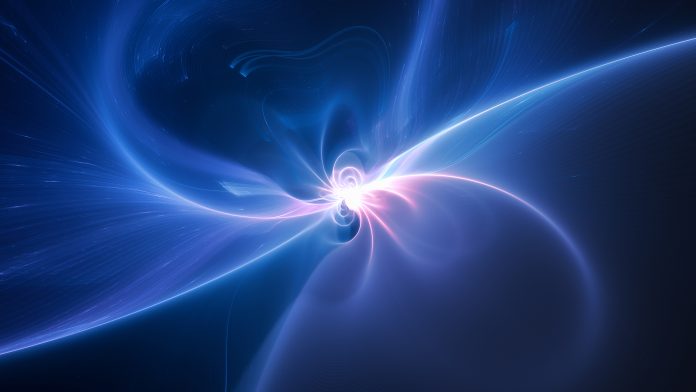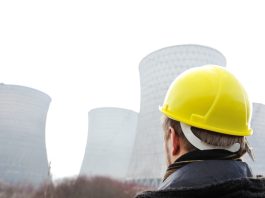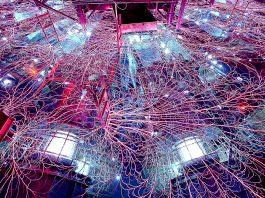Roger Jaspers, Chair of the Science and Technology of Nuclear Fusion Group, discusses TU/e’s role in training fusion engineers and advancing research in the dynamic fusion field.
Fusion research is rapidly advancing, with new fusion startups emerging thanks to private investment. Public awareness and interest are growing, driven by climate concerns, while a global competition is unfolding to be the first to achieve nuclear fusion power, leading to increased government funding.
What impact do these developments have on the TU/e university research group focused on the Science and Technology of Nuclear Fusion? First and foremost, the university has a large responsibility in training and educating people. Around ten years ago, TU/e launched a dedicated two-year master’s programme in Science and Technology of Nuclear Fusion – unique in setup and one of the leading programmes in this field worldwide.
Research and development in nuclear fusion
The field of research and development in nuclear fusion is characterised by broad interdisciplinarity, bringing together fields such as technical physics, mechanical engineering, sensor and control technology, and electrical engineering. Additionally, aspects of societal relevance and a socio-economic perspective are crucial. It features complex collaborations and a highly international, open work environment. Leveraging these factors, the TU/e master’s programme trains engineers with a new profile: multidisciplinary, versatile, flexible, and goal-oriented, capable of working in multicultural, international teams, and aware of the socio-economic aspects of their work. This unique approach sets the fusion master’s apart from many existing programmes.
Close collaboration with current research
A key component of the master’s programme is its strong connection to current research. With 25 fusion students per year who must complete an external research project and a thesis, a significant workforce becomes available, facilitating collaboration with nearly all major fusion institutes worldwide. These external projects have often led to new partnerships or the integration of TU/e’s in-house expertise to various fusion devices. Major fusion institutions, such as ITER, IPP in Germany, EPFL in Switzerland, UKAEA in the UK, GA in the USA, NIFS in Japan, and KFE in Korea, have hosted TU/e students. Support from FuseNet, an association dedicated to promoting fusion education with around 70 member universities, institutes, and companies, is crucial. The presence of FuseNet on the TU/e campus is a significant advantage for the MSc programme. However, to attract students and make a meaningful impact in the fusion field, it is even more important to have a robust and recognised in-house research programme at TU/e.
Our research spans multiple branches, with a key focus on integrating expertise from other university areas into the fusion field. This approach amplifies our impact, allowing us to make significant contributions to the fusion field despite being a relatively small team of ten PhD students and three principal investigators.
One particularly successful example is the work on fusion control initiated by Professor Marco de Baar, currently the director of the Dutch Institute for Fundamental Energy Research (DIFFER). Control engineers take a distinctly different approach compared to fusion physicists, which has proven essential for the complex, multidimensional control required in a fusion power plant. By using advanced tools developed in control theory, constraints on precise physics modelling can be eased. Today, this group has demonstrated the ability to manage the immense power flux leaving the plasma, preventing any damaging effects, or reducing the reactor performance. This is closely tied to the advancement of real-time diagnostics that visualise plasma state and dynamics, which are essential for ensuring successful and safe operation. This area of instrumentation is a key focus of the TU/e fusion group. By deploying these systems on major European tokamak devices, such as TCV in Switzerland and MAST-U in the UK, the group maintains a strong connection to the core of European experimental fusion research, coordinated by EUROfusion. The TU/e group’s expertise in 2D multi-spectral plasma imaging systems is highly valued and well recognised in the field.
This research directly connects to one of the critical topics in fusion. With new reactor designs, such as ITER, SPARC (US), and STEP (UK), aiming for net power output by generating more fusion power than is needed to heat the plasma, managing power exhaust has become a top priority. These reactors will concentrate a significant fraction of their power on small areas, which cannot withstand the extreme heat flux without active control or advanced divertor solutions.
The TU/e group is exploring two main approaches to address this challenge of power exhaust. First, they are investigating the potential of liquid walls, which offer several advantages over solid ones. Liquid walls can be continuously replenished, and the evaporated vapour helps protect the underlying structure by radiating away and redistributing heat over a larger area. However, handling liquid metals in a magnetic field is complex. To tackle this, the new LIMES lab is being built in collaboration with DIFFER and TU/e, where various liquid wall designs will be developed and tested under fusion-relevant heat load conditions.
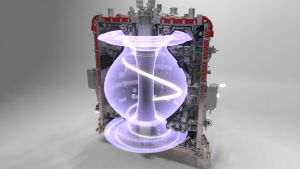
The second approach focuses on alternative divertor solutions, with the divertor being the component that handles most of the heat exhaust from the hot plasma. Since divertor research is a major topic in the fusion field, it is co-ordinated across Europe by EUROfusion, where Kevin Verhaegh from TU/e plays a key role. Beyond their scientific importance, the TU/e involvement in these projects provides TU/e students with direct engagement in cutting-edge research.
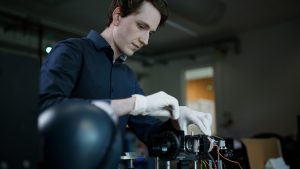
Work with Max Planck Institute
The TU/e group is also strengthening its collaboration with the W7-X team at the Max Planck Institute in Greifswald, Germany – home to the world’s largest stellarator. This alternative fusion reactor concept offers several fundamental advantages over the more developed tokamak design, such as ITER.
Two of our former staff scientists, Proll and Warmer, have had the chance to establish their own research groups at Max Planck. While we initially thought this would be a significant loss for our team, it has actually worked out to our benefit. We now have a strong partnership with the W7-X team, with numerous collaborative PhD and MSc projects. Proll and Warmer remain connected to our group, contributing to education and student supervision, creating a win-win situation.
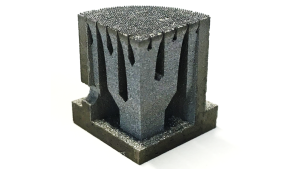
Their research focuses on optimising the stellarator’s performance by reducing turbulence. Proll explores ways to incorporate turbulence reduction into the geometric design, while Warmer bridges physics knowledge with engineering requirements and constraints, aiming for a systematic approach to reactor design.
Fusion energy deployment
A key area of focus within our group has been the study of fusion energy deployment. In recent years, TU/e has made a significant impact on discussions surrounding this theme, largely through the work of the former group leader, Professor Lopes Cardozo, and his team.
Even after we develop the first working prototype of a fusion reactor, numerous challenges remain before fusion can supply a significant portion of the world’s energy needs. These include material availability, fuel breeding, cost competitiveness compared to other energy sources, the speed of scaling up fusion production, and whether to prioritise electricity generation or also explore the direct use of fusion heat. Importantly, these considerations may already influence current reactor designs.
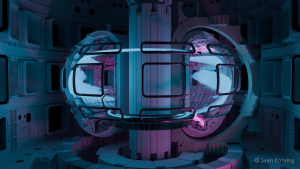
Although Professor Lopes Cardozo has recently retired, the group remains committed to this topic. We believe it is crucial to address these deployment challenges alongside the development of fusion power plants. There’s little sense in advancing fusion technology without also planning for its future integration into the global energy landscape.
Supporting the future of fusion
Overall, TU/e provides a dynamic and stimulating environment for fusion research. The university’s close proximity and strong scientific ties to the on-campus DIFFER institute, along with access to an extensive pool of expertise from various departments, create valuable opportunities for advancing fusion technology. The vibrant student atmosphere further enriches this environment, with numerous student teams developing innovative solutions to societal challenges, including energy and fusion.
This supportive ecosystem often inspires the creation of new start-ups. Two recent examples linked to TU/e’s fusion activities are Starwarden, founded by former MSc student Nick Maassen, which focuses on 3D-printed heat pipes designed to handle the extreme heat loads in fusion applications, and Ignition Computing, established by a former TU/e PhD student, specialising in high-performance computing solutions for fusion and beyond.
This breadth highlights fusion as a multidisciplinary field where a university group’s role extends beyond contributing to scientific research. While research remains crucial, fostering talent and providing an attractive breeding ground for innovation may be the most essential components needed to make fusion a long-term success.
If this research sounds interesting to you or if you are interested in the Fusion master programme, then please contact Roger Jaspers.
Please note, this article will also appear in the 20th edition of our quarterly publication.

